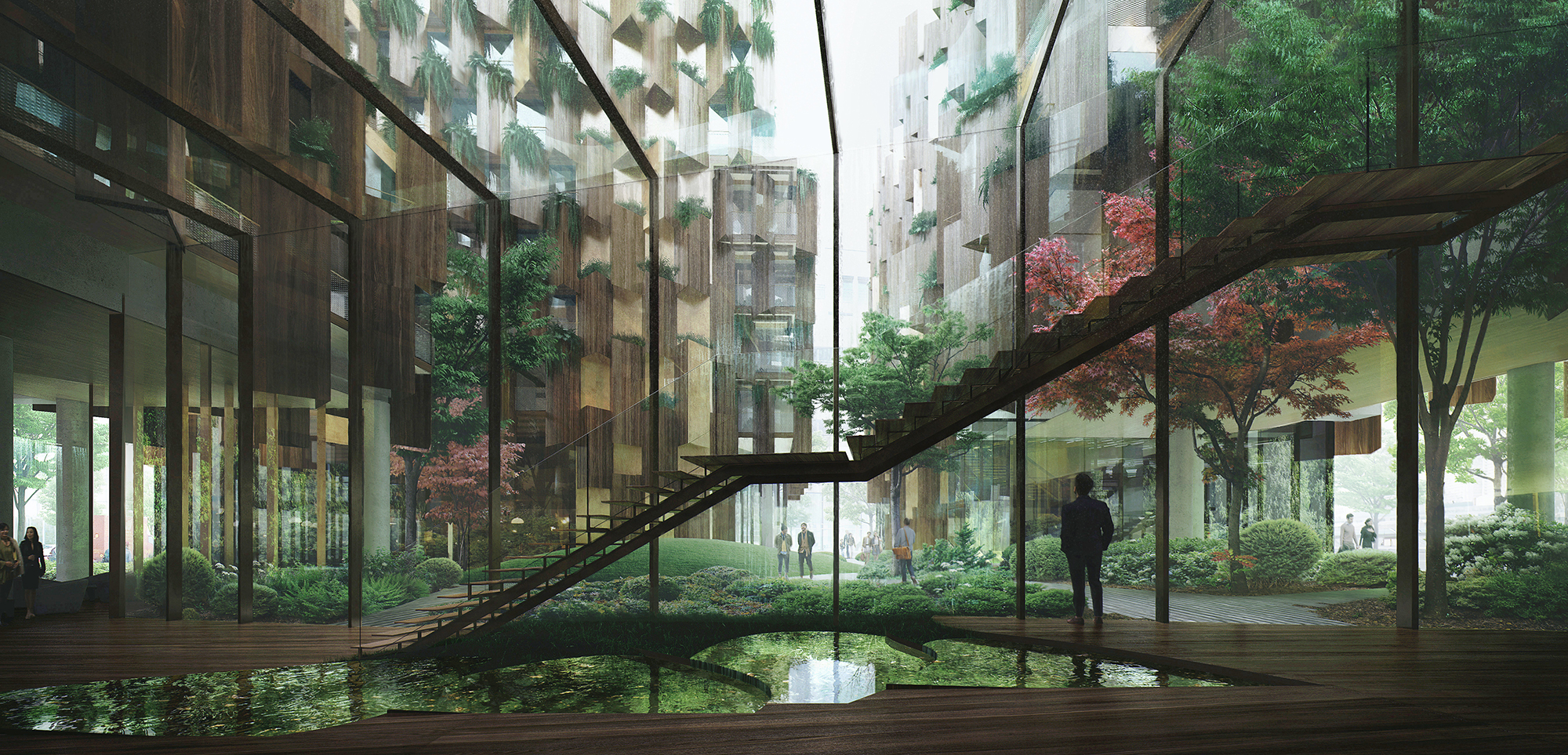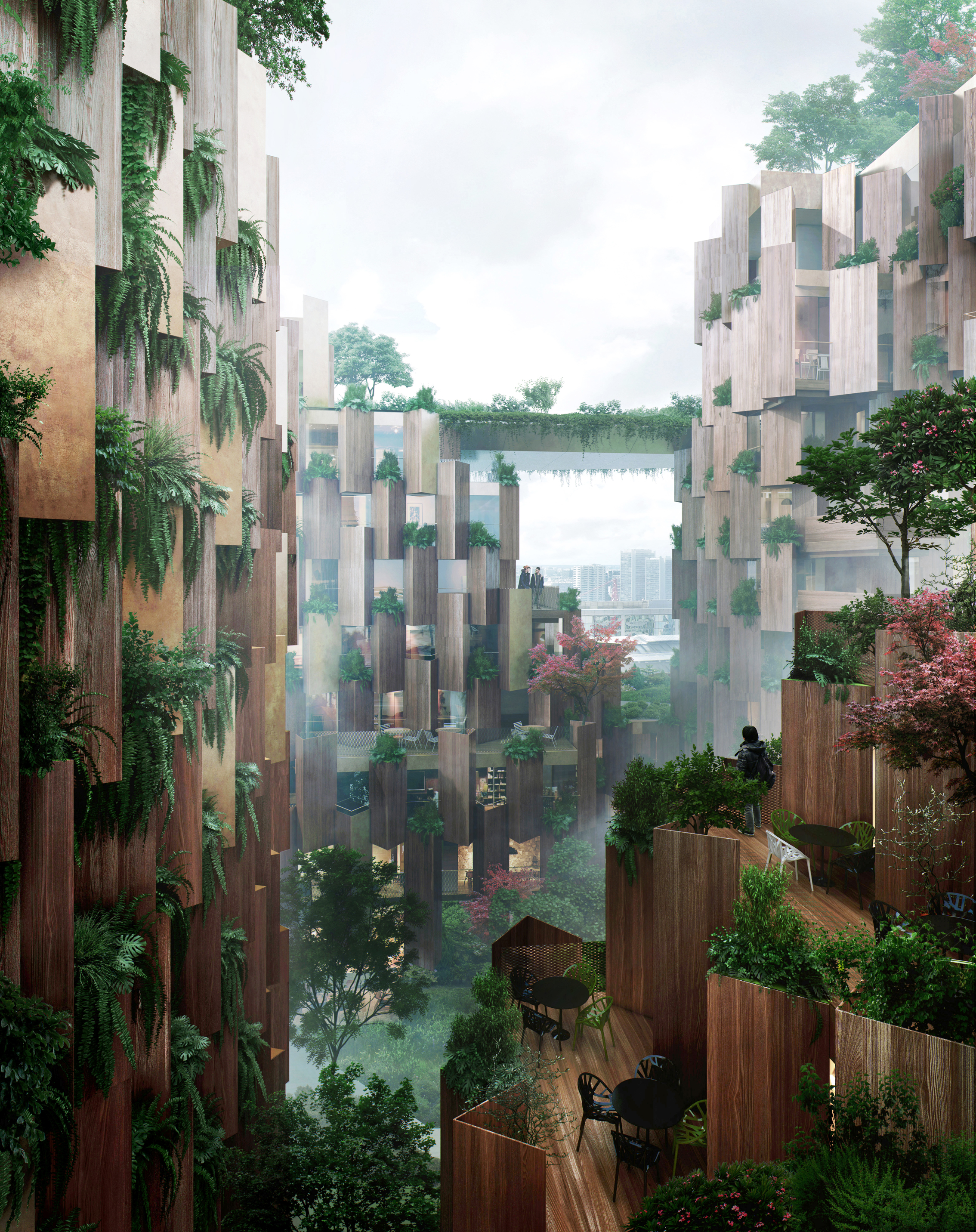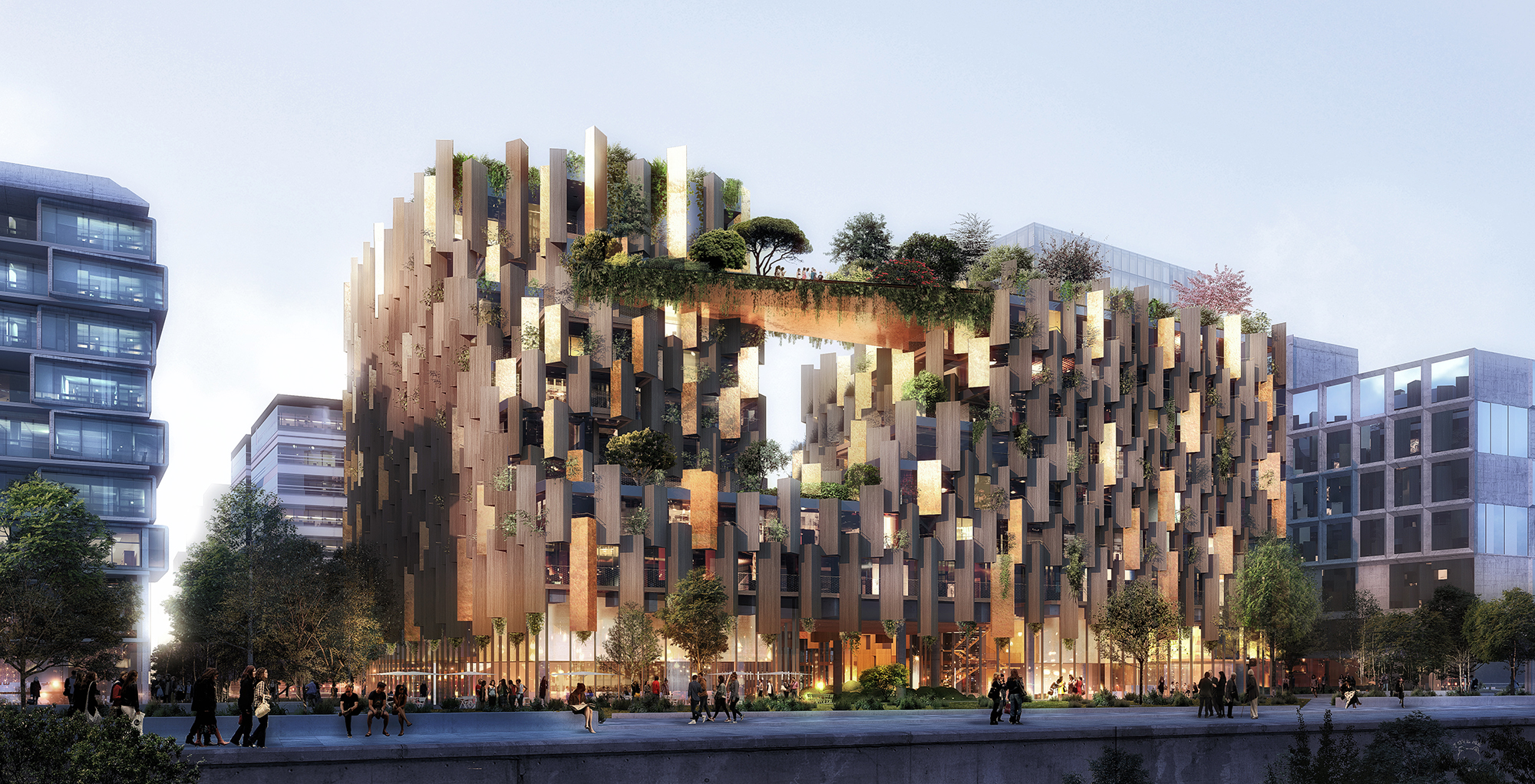
A New Luxury Hotel in Paris Will Be Covered in Plants by 2022
A new kind of hotel is growing in Paris– and it’s not just for botany-loving foreigners. Architect Kengo Kuma recently released his plans for a luxury hotel near the left bank of the Seine that fuses nature and architecture into one entity.
The building complex, which the architecture firm Kengo Kuma & Associates has named 1Hotel Paris, will be in the 15th Arrondissement and will appear as if plants and greenery are growing out of it from every direction, creating the illusion of one massive tree. Wooden panels align and hold various types of plants together while a garden grows on the ground level between the individual buildings, effectively transforming the complex into an urban forest. “Our design strategy was to develop a sculptural form, as if shaped by natural erosion, allowing light to reach the avenue below,” the firm said in a statement.
The trees and plants naturally flow between 1Hotel Paris’s panels while a bridge of greenery between the two main structures connects the building complexes. In addition to hotel rooms, the complex will also have a bar, restaurant, and rooftop. The firm intends for 1Hotel Paris to become a city landmark– an environmental focal point of the city, or a “green lung,”– while at the same time functioning as a place tourists can stay.
Perhaps the most intriguing aspect of 1Hotel Paris’s conception is the fact that it looks modern, playful, and captivating, but the greenery is also practical. The structure provides a shield from the noise of the city, as well as an extra layer of privacy– the plants function as natural window blinds. Almost like a playground, there are terraces and gardens on every level and a constellation of wood, glass, and greenery. Inside the building, plants and trees cover terraces and walls in every direction. “The warm materiality of the wood is combined with metal panels whose finish provides a soft reflection. Throughout the day, the [hotel] transforms with the shifting light,” the firm said.
Kuma, who was born in Japan and is based in Paris, has focused his work for years on bringing environmental elements back into cities, integrating them into his architectural projects while still maintaining the integrity of the urban structures that are their focus. In his work, Z58 from 2006 in Shanghai, China, he implemented two layers of protection– one of a waterfall, and another of greenery– to create a quiet oasis amidst the chaotic noise of the city. As with 1Hotel Paris, the plants protect the building from the city noise and function as physical blinders to scattered, often intense sunlight.
“What I’m most interested in now is inverting the structure of a culture that is centered around the city,” Kuma writes in the preface of the book [easyazon_link identifier=”0500342830″ locale=”US” tag=”gardcoll03-20″]Kengo Kuma: Complete Works[/easyazon_link], which was published in 2013. In the preface, Kuma outlines his philosophy on urban architecture, writing about a needed shift to the city as an epicenter from which all civilization flows. He sees urban architectural trends as essentially taking over the standard for how buildings are constructed in every part of the world.
While villages and towns outside of cosmopolitan cities will rely on local materials such as stone, clay, and wood to build in a style that aligns with the town’s culture, tradition is eventually replaced by the latest trends from New York and London in a matter of years. Kuma’s turning point was the 2011 tsunami in Japan, which, he writes, “provided an opportunity to redress the balance of this social and cultural decline.” During the economic recession, Kuma worked exclusively outside of Tokyo, which was a chance to see how the language of culture is embedded into the architecture outside one of the world’s cosmopolitan hubs. The plan for 1Hotel Paris takes this philosophy and reapplies it back to the city, offering the landscape of Paris a new language of architecture.
The project is projected to be completed by 2022.
For more information on 1HotelParis, visit the firm’s website. Headed to Paris sooner than 2022? Check out our list of the most romantic hotels in the city.













































